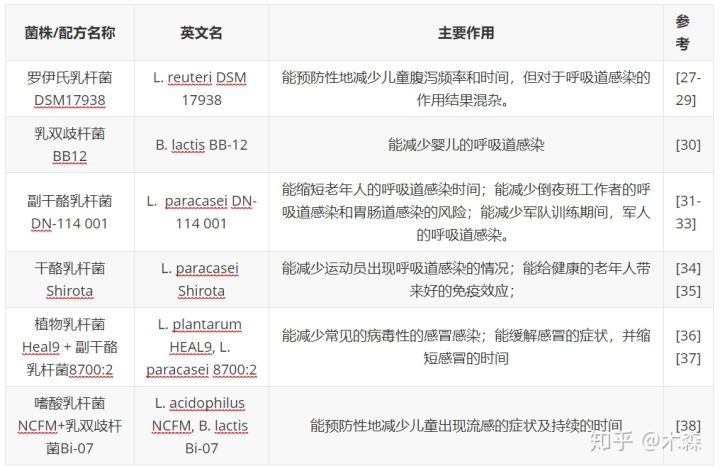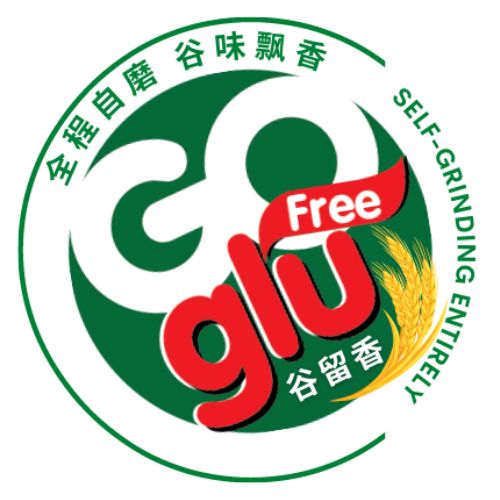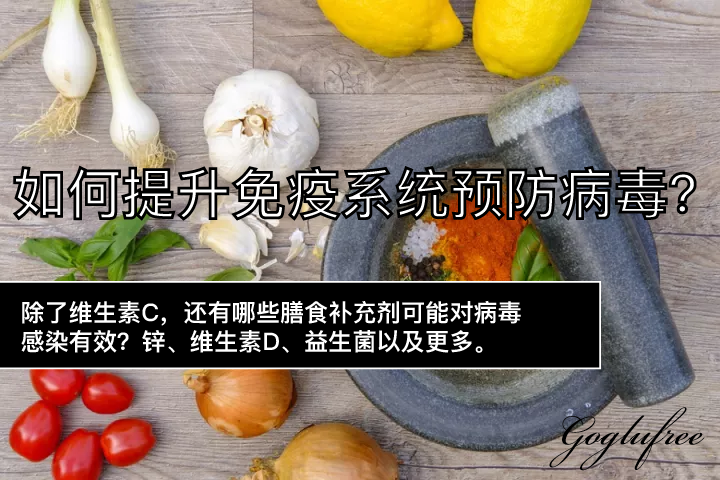如何提高免疫系统预防病毒?
除了维生素C,还有哪些膳食补充剂可能对病毒感染有效?锌、维生素D、益生菌以及更多。
在新冠病毒蔓延全球之际,许多膳食补充剂被搬上了舞台——被宣称能够用于病毒感染的预防或治疗。
但你需要知道的是,没有一种补充剂被确切地证明过对新冠有效。
新冠非常新,和以往常规的病毒大不相同。
那些声称有效的补充剂,往往只是在流感或其他感染性疾病中起过作用。
而至于它们是否对新冠有效,仍然需要有研究去检验。
为了让你有清晰的认识,我对那些“可能有用”的补充剂进行了整理。
这些补充剂包括:锌、维生素C、维生素D、N-乙酰半胱氨酸、大蒜、蜂蜜、接骨木莓提取物、南非天竺葵、以及某些特定的益生菌。
再次提醒,这些补充剂都未在新冠病毒中得到过验证。
而以下内容,只用作信息的分享,不作为任何预防或治疗疾病的依据。
1.锌
锌参与了人体中的许多免疫过程,而离子形态的锌则能对鼻病毒起到抑制作用。[1]
对于一般性的感冒,锌的锭剂有一定的缓解效果。
在症状出现的24小时内,每天含服75~95mg的锌锭剂,能够缩短感冒的时间。[2] [3]
值得注意的是,这里用到的锌的剂量(75~95mg/天)超过了一般允许摄入的上限(40mg/天)。
但通常而言,在两个星期内使用这样的剂量是安全的。
不过,如果你出现了恶心、腹泻、头痛这样的副作用,可能表明你摄入的锌太多了——毕竟,许多综合维生素中就含有较高的锌。
2.维生素C
用维生素C来预防和治疗呼吸道感染,已有接近80年的历史。
作为一种必需的营养素,维生素C维持着免疫细胞的形态和功能,同时也能够支持上皮屏障的完整性。
与此同时,在出现感染时,因为氧化应激,人体对维生素C的需求会增加。
并且,体外试验表明,一定浓度的维生素C对病毒是有杀灭作用的。[4]
所以,从理论上来说,对于预防和治疗病毒感染,维生素C是可能有效的。
而现有研究的结果是这样的:
① 在感冒后才开始服用维生素C,通常没有很大的作用——除非使用较大的剂量(通常在3g以上)。[5]
② 而长年使用维生素C的人,感冒后症状往往会更轻,患病的时间也通常会更短。
③ 少数的个案研究表明,对于严重的呼吸道感染,静脉注射大量的维生素C(几十克甚至上百克),有时能够挽救病人。[6]
从这些结果来看,平时就保证充足的维生素C的摄入,可能是较为理想的。
3.维生素D
维生素D对免疫系统有重要的调节作用。
许多免疫细胞上都存在维生素D受体;缺乏维生素D则会影响这些免疫细胞的正常功能。而维生素D不足,会增加多种感染的风险。[7]
研究表明,补充维生素D能够减少上呼吸道的感染。[8]
并且,那些维生素D严重缺乏的人(血清25-羟基维生素D<10ng/ml)能获得更大的益处。
我们知道,获得维生素D最自然的方式就是晒太阳。
不过细节在于,要满足人体的维生素D所需,需要每周晒3次以上的太阳——每次露出1/3以上的皮肤,晒10~30分钟。
如果无法晒到足够的阳光,通常需要额外补充维生素D。
维生素D的推荐摄入量被设置在400~800IU/天。但对于大多数成年人来说,这个剂量可能是不够的——理想且适当的补充量通常在1000~2000IU/天。[9]
而至于维生素D缺乏的人群,需要的剂量则会更高。
维生素D补充方案:
血清维生素D的正常水平被认为在30-80ng/ml之间。
如果你的血清维生素D水平低于10ng/ml,那么你每周需要补充50000IU的维生素D,持续2个月。
如果在10-19.9/ml之间,那么你每周需要补25000IU的维生素D,持续2个月。
如果在20-29.9ng/ml,需要则每周补充25000IU的维生素D,持续1个月。
在血清维生素D的水平达到30ng/ml之后,每周补充8000IU左右作为维持即可。
4.N-乙酰半胱氨酸
N-乙酰半胱氨酸(NAC)是半胱氨酸乙酰化的形式。
半胱氨酸是谷胱甘肽的原料之一;而谷胱甘肽是人体中最重要的抗氧化剂。
补充NAC被认为能提高组织中的谷胱甘肽水平,从而增加人体的抗氧化能力。
口服NAC能够对肺部提供抗氧化的帮助,但起效时间往往较长。
在慢性阻塞性肺病和慢性支气管炎中,NAC都能帮助溶解肺部粘液,并改善患者的症状。
不过,通常需要3个月以上的补充,才会产生明显的效果。[10-12]
所以,对于急性的肺部感染,往往等不到口服NAC的起效。
但少量的研究表明,雾化的NAC,可能依然是有用的。[13]
5.大蒜
大蒜是被研究得最多的“药食同源”的食物之一。
体外试验表明,大蒜能增强许多免疫细胞的功能,包括巨噬细胞、淋巴细胞、自然杀伤细胞等等。[14]
一项纳入146人的随机对照试验发现,在3个月间,大蒜服用组出现感冒的情况要明显少于安慰剂组。
并且,大蒜服用者们的症状持续时间也要更短——平均1.52天。而在对照组,这个数值是5.01天。[15]
而另一项纳入120人的研究发现,每日补充2.56g的陈年大蒜提取物,也能对感冒和流感起作用。[16]
在出现感冒后,相比于安慰剂组,大蒜服用者的感冒持续时间缩短了61%;与此同时,他们症状也往往更轻。
大蒜中起免疫作用的主要成分之一是大蒜素。
而在烹饪前,切碎或捣碎大蒜后静置10分钟,能够促进更多的大蒜素的生成。
6.蜂蜜
尽管不知道是如何起作用的,但蜂蜜似乎对咳嗽是有效的。[17]
2010年的一项研究发现,针对上呼吸道感染导致的儿童咳嗽,蜂蜜(睡前2.5ml)的效果比止咳药(右美沙芬)和抗组胺药(苯海拉明)都要更好。[18]
并且,效果和蜂蜜的品种无关——不同类型的蜂蜜,止咳效果都是类似的。
7.接骨木莓提取物
接骨木莓(Elderberry)是欧美常用的一种药用植物。
补充剂中的接骨木莓提取物,通常来自于欧洲接骨木(European elder,Sambucus nigra)。
接骨木莓有较高含量的维生素C和花青素,并在传统上被用于治疗感冒和流感。
2019年的一项综述表明,补充接骨木莓,能够有效地减少上呼吸道感染的症状。[19]
一项纳入60人的研究发现,在患上流感后,每天服用4次接骨木莓提取物的糖浆(每次15ml),能够让症状的改善时间提前到2~4天——在对照组中,这个时间是7~8天。[20]
在一项纳入312名飞行旅客的随机对照试验中,每天服用3粒接骨木莓提取物(300mg)的受试者,在患上感冒后的症状会更轻。[21]
不过,需要提醒的是,生的接骨木莓具有一定的毒性,可能会引起恶心、呕吐和腹泻。
虽然药用的接骨木莓都是熟的,但依然不建议未成年人和孕妇使用。
8.南非天竺葵
南非天竺葵(Pelargonium sidoides)是一种原产自南非的一种药用植物。
这种草药,能够对一些病毒起到直接的抑制作用,包括对H1N1、H3N2和疱疹病毒。
在人体试验中发现,南非天竺葵对于急性的支气管炎的治疗是比较有效的。[22-24]
研究表明,40%~60%的成人或儿童患者在使用南非天竺葵后的一周内,症状都能够获得较大的缓解。
缓解的症状包括,头痛、发热、疲劳、咳嗽、咳嗽时胸痛、肺部含痰、鼾音和流鼻涕。
此外,南非天竺葵似乎能够缩短感冒,并改善急性鼻窦炎的症状。[25] [26]
9.特定的益生菌
人体中70%的免疫功能由肠道掌管,而一些特定的益生菌能够调节人体的免疫系统。
对于常见的感染性疾病,一些特定的益生菌菌株或配方可能会有帮助。
以下列出了可能有用的菌株或配方:

需要提醒的是,益生菌的许多作用都是菌株特异性的。
因而不能随意地将某种益生菌菌株或配方的作用,推广到其他益生菌,甚至到所有益生菌上。
木森说
在上面,我为你整理了对病毒感染可能有用的膳食补充剂。
但不管怎样,膳食补充剂最多只能作为“补充剂”。
在预防病毒感染这件上,做好下面的事情是更为重要的:
① 不要用脏手摸眼睛、鼻子和嘴巴——在外出时,双手最容易接触到可能被病毒污染的区域。
② 洗手至少洗够20秒——绝大多数人都没有达到这个时间。
③ 避免吸烟——吸烟会削弱人体的免疫功能,而吸烟者肺部感染的风险是常人的2-4倍。
④ 保证膳食营养——你可以从饮食中获取到丰富的维生素C(蔬菜水果,特别是甜椒、猕猴桃、橙子、西红柿和花椰菜)和锌(牡蛎、肉类、豆类、蘑菇)。
⑤ 尽量避免过度加工的食品(比如饼干、方便面)——高糖+高脂+低营养,会给免疫系统带来过大的负担。
⑥ 保证充足的睡眠(7~9小时)—— 睡眠是免疫系统最重要的补给时间,缺觉有时会带来致命的感染。
希望这些内容能够对你有用。
而疫情仍在继续,愿我们都能健康平安。
-End-
相关阅读:
预防病毒感染,请务必好好睡觉 << 点击阅读
参考文献:
[1] Hulisz, D. (2004). Efficacy of zinc against common cold viruses: an overview. Journal of the American Pharmacists Association, 44(5), 594-603.
[2] Hemilä, H., & Chalker, E. (2015). The effectiveness of high dose zinc acetate lozenges on various common cold symptoms: a meta-analysis. BMC family practice, 16(1), 24.
[3] Hemilä, H., Petrus, E. J., Fitzgerald, J. T., & Prasad, A. (2016). Zinc acetate lozenges for treating the common cold: an individual patient data meta‐analysis. British journal of clinical pharmacology, 82(5), 1393-1398.
[4] Hemilä, H. (2017). Vitamin C and infections. Nutrients, 9(4), 339.
[5] Hemilä, H., & Chalker, E. (2013). Vitamin C for preventing and treating the common cold. Cochrane Database of Systematic Reviews, (1).
[6] Bharara, A., Grossman, C., Grinnan, D., Syed, A., Fisher, B., DeWilde, C., & Natarajan, R. (2016). Intravenous vitamin C administered as adjunctive therapy for recurrent acute respiratory distress syndrome. Case reports in critical care, 2016.
[7] F Gunville, C., M Mourani, P., & A Ginde, A. (2013). The role of vitamin D in prevention and treatment of infection. Inflammation & Allergy-Drug Targets (Formerly Current Drug Targets-Inflammation & Allergy), 12(4), 239-245.
[8] Martineau, A. R., Jolliffe, D. A., Hooper, R. L., Greenberg, L., Aloia, J. F., Bergman, P., ... & Goodall, E. C. (2017). Vitamin D supplementation to prevent acute respiratory tract infections: systematic review and meta-analysis of individual participant data. bmj, 356, i6583.
[9] Aloia, J. F., Patel, M., DiMaano, R., Li-Ng, M., Talwar, S. A., Mikhail, M., ... & Yeh, J. K. (2008). Vitamin D intake to attain a desired serum 25-hydroxyvitamin D concentration. The American journal of clinical nutrition, 87(6), 1952-1958.
[10] Tse, H. N., Raiteri, L., Wong, K. Y., Yee, K. S., Ng, L. Y., Wai, K. Y., ... & Chan, M. H. (2013). High-dose N-acetylcysteine in stable COPD: the 1-year, double-blind, randomized, placebo-controlled HIACE study. Chest, 144(1), 106-118.
[11] Stey, C., Steurer, J., Bachmann, S., Medici, T. C., & Tramer, M. R. (2000). The effect of oral N-acetylcysteine in chronic bronchitis: a quantitative systematic review. European Respiratory Journal, 16(2), 253-262.
[12] Johnson, K., McEvoy, C. E., Naqvi, S., Wendt, C., Reilkoff, R. A., Kunisaki, K. M., ... & Niewoehner, D. E. (2016). High-dose oral N-acetylcysteine fails to improve respiratory health status in patients with chronic obstructive pulmonary disease and chronic bronchitis: a randomized, placebo-controlled trial. International journal of chronic obstructive pulmonary disease, 11, 799.
[13] Naz, F., Raza, A. B., Ijaz, I., & Kazi, M. Y. (2014). Effectiveness of nebulized N-acetylcysteine solution in children with acute bronchiolitis. J Coll Physicians Surg Pak, 24(6), 408-11.
[14] Arreola, R., Quintero-Fabián, S., López-Roa, R. I., Flores-Gutiérrez, E. O., Reyes-Grajeda, J. P., Carrera-Quintanar, L., & Ortuño-Sahagún, D. (2015). Immunomodulation and anti-inflammatory effects of garlic compounds. Journal of immunology research, 2015.
[15] Josling, P. (2001). Preventing the common cold with a garlic supplement: a double-blind, placebo-controlled survey. Advances in therapy, 18(4), 189-193.
[16] Nantz, M. P., Rowe, C. A., Muller, C. E., Creasy, R. A., Stanilka, J. M., & Percival, S. S. (2012). Supplementation with aged garlic extract improves both NK and γδ-T cell function and reduces the severity of cold and flu symptoms: a randomized, double-blind, placebo-controlled nutrition intervention. Clinical Nutrition, 31(3), 337-344.
[17] Goldman, R. D. (2014). Honey for treatment of cough in children. Canadian Family Physician, 60(12), 1107-1110.
[18] Shadkam, M. N., Mozaffari-Khosravi, H., & Mozayan, M. R. (2010). A comparison of the effect of honey, dextromethorphan, and diphenhydramine on nightly cough and sleep quality in children and their parents. The Journal of Alternative and Complementary Medicine, 16(7), 787-793.
[19] Hawkins, J., Baker, C., Cherry, L., & Dunne, E. (2019). Black elderberry (Sambucus nigra) supplementation effectively treats upper respiratory symptoms: A meta-analysis of randomized, controlled clinical trials. Complementary therapies in medicine, 42, 361-365.
[20] Zakay-Rones, Z., Thom, E., Wollan, T., & Wadstein, J. (2004). Randomized study of the efficacy and safety of oral elderberry extract in the treatment of influenza A and B virus infections. Journal of International Medical Research, 32(2), 132-140.
[21] Tiralongo, E., Wee, S. S., & Lea, R. A. (2016). Elderberry supplementation reduces cold duration and symptoms in air-travellers: a randomized, double-blind placebo-controlled clinical trial. Nutrients, 8(4), 182.
[22] Matthys, H., Kamin, W., Funk, P., & Heger, M. (2007). Pelargonium sidoides preparation (EPs® 7630) in the treatment of acute bronchitis in adults and children. Phytomedicine, 14, 69-73.
[23] Kamin, W., Ilyenko, L. I., Malek, F. A., & Kieser, M. (2012). Treatment of acute bronchitis with EPs 7630: randomized, controlled trial in children and adolescents. Pediatrics International, 54(2), 219-226.
[24] Kamin, W., Maydannik, V. G., Malek, F. A., & Kieser, M. (2010). Efficacy and tolerability of EPs 7630 in patients (aged 6–18 years old) with acute bronchitis: A randomized, double‐blind, placebo‐controlled clinical dose‐finding study. Acta Paediatrica, 99(4), 537-543.
[25] Timmer, A., Guenther, J., Motschall, E., Ruecker, G., Antes, G., & Kern, W. V. (2013). Pelargonium sidoides extract for treating acute respiratory tract infections. Cochrane Database of Systematic Reviews, (10).
[26] Careddu, D., & Pettenazzo, A. (2018). Pelargonium sidoides extract EPs 7630: a review of its clinical efficacy and safety for treating acute respiratory tract infections in children. International journal of general medicine, 11, 91.
[27] Gutierrez-Castrellon, P., Lopez-Velazquez, G., Diaz-Garcia, L., Jimenez-Gutierrez, C., Mancilla-Ramirez, J., Estevez-Jimenez, J., & Parra, M. (2014). Diarrhea in preschool children and Lactobacillus reuteri: a randomized controlled trial. Pediatrics, 133(4), e904-e909.
[28] Agustina, R., Kok, F. J., Van De Rest, O., Fahmida, U., Firmansyah, A., Lukito, W., ... & Bovee-Oudenhoven, I. M. (2012). Randomized trial of probiotics and calcium on diarrhea and respiratory tract infections in Indonesian children. Pediatrics, 129(5), e1155-e1164.
[29] Weizman, Z., Asli, G., & Alsheikh, A. (2005). Effect of a probiotic infant formula on infections in child care centers: comparison of two probiotic agents. Pediatrics, 115(1), 5-9.
[30] Taipale, T., Pienihäkkinen, K., Isolauri, E., Larsen, C., Brockmann, E., Alanen, P., ... & Söderling, E. (2011). Bifidobacterium animalis subsp. lactis BB-12 in reducing the risk of infections in infancy. British Journal of Nutrition, 105(3), 409-416.
[31] Guillemard, E., Tondu, F., Lacoin, F., & Schrezenmeir, J. (2010). Consumption of a fermented dairy product containing the probiotic Lactobacillus casei DN-114 001 reduces the duration of respiratory infections in the elderly in a randomised controlled trial. British journal of nutrition, 103(1), 58-68.
[32] Guillemard, E., Tanguy, J., Flavigny, A. L., de la Motte, S., & Schrezenmeir, J. (2010). Effects of consumption of a fermented dairy product containing the probiotic Lactobacillus casei DN-114 001 on common respiratory and gastrointestinal infections in shift workers in a randomized controlled trial. Journal of the American College of Nutrition, 29(5), 455-468.
[33] Tiollier, E., Chennaoui, M., Gomez-Merino, D., Drogou, C., Filaire, E., & Guezennec, C. Y. (2007). Effect of a probiotics supplementation on respiratory infections and immune and hormonal parameters during intense military training. Military medicine, 172(9), 1006-1011.
[34] Gleeson, M., Bishop, N. C., Oliveira, M., & Tauler, P. (2011). Daily probiotic’s (Lactobacillus casei Shirota) reduction of infection incidence in athletes. International journal of sport nutrition and exercise metabolism, 21(1), 55-64.
[35] Dong, H., Rowland, I., Thomas, L. V., & Yaqoob, P. (2013). Immunomodulatory effects of a probiotic drink containing Lactobacillus casei Shirota in healthy older volunteers. European journal of nutrition, 52(8), 1853-1863.
[36] Berggren, A., Ahrén, I. L., Larsson, N., & Önning, G. (2011). Randomised, double-blind and placebo-controlled study using new probiotic lactobacilli for strengthening the body immune defence against viral infections. European journal of nutrition, 50(3), 203-210.
[37] Busch, R., Gruenwald, J., & Dudek, S. (2013). Randomized, double blind and placebo controlled study using a combination of two probiotic lactobacilli to alleviate symptoms and frequency of common cold. Food and Nutrition Sciences, 4(11), 13-20.
[38] Leyer, G. J., Li, S., Mubasher, M. E., Reifer, C., & Ouwehand, A. C. (2009). Probiotic effects on cold and influenza-like symptom incidence and duration in children. Pediatrics, 124(2), e172-e179.
免责声明:
本账号发表的内容仅是用于信息的分享,仅供学习参考使用。文章内容不能直接作为任何健康干预的依据。在采取任何预防、治疗或治愈的措施之前,请先与你的医疗提供者进行沟通。

